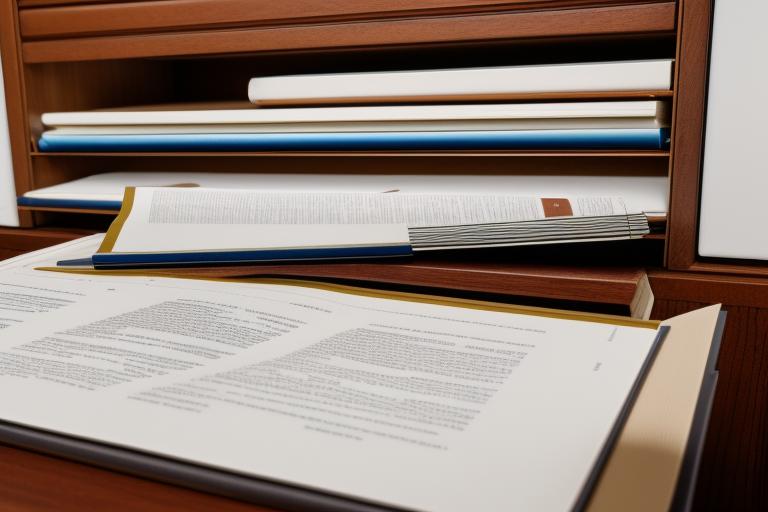
In the world of intellectual property, prior art search is a significant factor in evaluating an invention’s novelty and inventiveness. Understanding why prior art search is required is essential to determine the novelty and patentability of an innovation. Whether you’re an inventor, a patent applicant, or a patent examiner, understanding the concept and importance of conducting a prior art search and executing a comprehensive search is fundamental. This blog aims to delve into the world of prior art searches, encompassing their importance, diverse types, associated costs, and the available avenues for conducting such a search.
Prior Art Search: Everything you Need to Know.
It’s crucial to understand why prior art search is required to prevent the grant of patents for non-original ideas. Before delving into determining patentability through prior art, let’s grasp the concept of ‘prior art.’
The prior art includes all scientific and technical knowledge that existed before your invention. Journal articles, technical publications, press releases, marketing or product information brochures, newspaper articles, books, periodicals, or patents are all examples of this.
What Effect Does Prior Art Have on Your Patents?
Prior art can have a significant impact on your patent applications. Understanding why prior art search is required emphasizes the importance of validating the originality of a concept before pursuing patent rights. If prior art that discloses the same invention or renders your invention obvious is discovered, it can hurt the novelty and inventiveness of your patent application. In such cases, your patent may be rejected during the examination process, or it may be declared invalid if it has already been granted. Prior art is used to evaluate your invention, and any similarities or overlaps can weaken your patent claims.
What Is Prior Art Search?

A prior art search is the process of discovering and evaluating existing information about an invention to determine its novelty and inventiveness. There are plenty of patentability search databases and search engines available for inexperienced users. It involves searching databases, patent repositories, scientific journals, industry publications, and other sources for prior art that may be relevant to the invention under consideration. A prior art search seeks all relevant references that may affect an invention’s patentability.
Apart from determining novelty, the prior art search process fulfills multiple functions, including boosting research and development (R&D) initiatives, preventing duplication of research, significantly reducing R&D expenditures, formulating creative technical solutions, evaluating particular technologies, and planning for the development of new products. Conducting a why Prior Art Search is required helps prevent patent infringement by identifying existing technologies or innovations.
Also Read: What is patentability search and why perform it before filing your patent application?
Importance of Conducting a Prior Art Search
The significance of why prior art search is required becomes evident in safeguarding against legal disputes regarding intellectual property rights. For an invention to qualify for patent protection, it must meet three fundamental criteria: novelty, utility, and non-obviousness. Among these, novelty—indicating the invention’s newness and absence of prior publication—is the most important. Performing prior art searches before filing a patent application, inventors must assess the novelty of their inventions, which includes conducting extensive prior art searches to identify all existing related prior arts.
Apart from determining novelty, the prior art search process fulfills multiple functions, including boosting research and development (R&D) initiatives, preventing duplication of research, significantly reducing R&D expenditures, formulating creative technical solutions, evaluating particular technologies, and planning for the development of new products.
What Are the Different Types of Prior Art Searches?
A comprehensive understanding of why prior art search is required ensures that new inventions are not redundant or merely slight improvements on existing ideas. Different types of prior art searches can be conducted depending on the specific requirements and objectives. Some examples of common prior art searches are:
Patent Search
This type of search focuses on existing patents and patent applications that are related to the invention. It assists in identifying prior art references that reveal similar or closely related inventions. The thoroughness of why prior art search is required directly impacts the credibility and strength of a patent application.
Also Read: How To Patent an Idea in the USA?
Non-Patent Literature (NPL) Search
In addition to patents, scientific literature, technical papers, conference proceedings, and industry publications contain a wealth of information. An NPL search seeks out relevant prior art from non-patent sources.
Invalidity Search
An invalidity search is performed to challenge the validity of an existing patent. It involves searching for prior art references that were overlooked during the filing of a patent application.
Freedom to Operate (FTO) Search
An FTO search determines whether a product, process, or technology may infringe on existing patents. It aids in identifying patents or patent claims that may pose a risk of infringement.
Why Prior Art Search is Required?
It’s crucial to understand why prior art search is required to prevent the grant of patents for non-original ideas. A comprehensive prior art search is necessary for several reasons:
Determining Patentability: Before filing a patent application, a thorough prior art search can help assess the novelty and inventiveness of an invention. It enables inventors and patent applicants to assess their chances of obtaining a patent and make knowledgeable decisions about the scope of their claims.
Avoiding Infringement: An FTO search can help you identify existing patents that may pose a risk of infringement. This allows you to make necessary changes to your invention or obtain licenses to avoid legal disputes and infringement claims.
Saving Time and Resources: Investing in a prior art search early in the patent process can help you save time and money. It saves the cost and effort of filing a patent application that has a low chance of success due to prior art.
Strengthening Patent Claims: By understanding the existing landscape, inventors can strengthen their patent claims by conducting a thorough prior art search. Knowing what prior art exists allows inventors to draft claims that distinguish their invention from the prior art, increasing the likelihood of obtaining a stronger patent.
What Factors Influence the Cost of Searching for Prior Art?
The cost of conducting a thorough search depends on several factors, including the complexity of the invention, the thoroughness of the search, the variety of databases, AI search tools, and sources that are being examined, and the degree of experience required. While a simple independent search with freely available resources is usually less expensive, the results might not be very comprehensive. On the other hand, using a professional prior art search conducted by a patent attorney or research firm may cost more, but it gives you access to specialized databases and professional analysis.
Also Read: How much does a US design patent application cost in 2023?
At What Point Can Evidence Qualify as Prior Art?
Evidence must be publicly available and sufficiently disclose the invention so that experts in the field can duplicate or recognize it to be considered prior art. Patents, patent applications, scientific publications, product manuals, open demonstrations, websites, videos, and any other documented form of publication that was published before the filing date of the patent application are all considered instances of such evidence.
How Do You Conduct Prior Art Searches on your Own?
Before you begin, you should educate yourself on search techniques. Finding prior art is all about knowing where to look and how to conduct a search. Here are some steps to follow to file a design patent on your own:
Specify your Search Criteria: Clearly outline the key attributes and components of your innovation that you need to do a prior search.
Leverage Patent Databases: Initiate your search strategy within patent databases like the United States Patent and Trademark Office (USPTO), the European Patent Office (EPO), and other national patent registries. Employ keywords, classification codes, and pertinent search parameters to conduct the search.
Explore Non-Patent Literature: Seek out scientific journals, technical papers, conference proceedings, and industry publications that might contain relevant prior art. Use academic databases, digital libraries, and search engines to access these reservoirs of information.
Assess the References: Evaluate the identified relevant references and compare them to your invention. Assess their relevance, similarities, and potential impact on your invention’s eligibility for patent protection.
Also Read: What are the benefits of patent protection?
Why Should You Consider Hiring A Research Firm/Attorney to Conduct Your Search?
While you can carry out a prior art search independently as it can be a cost-effective choice, opting for a research firm or a patent attorney offers multiple advantages:
- Expertise and Experience: These professionals possess specialized knowledge and extensive experience in prior art searches. Their familiarity with patent databases, legal requirements, and diverse sources enables them to efficiently uncover pertinent prior art search results.
- Access to Specialized Databases: Research firms and patent offices /attorneys have access to exclusive databases and industry-specific resources not easily accessible to the public. These resources significantly improve the thoroughness and accuracy of search outcomes.
- Comprehensive Analysis: Professional firms deliver comprehensive analysis of located prior art, aiding in understanding its potential impact on your invention. They offer valuable insights to fortify your patent claims.
- Legal Guidance: Patent attorneys not only conduct searches but also provide legal counsel based on the results. They help navigate the patent application process, interpret legal implications, and assist in crafting robust patent claims.
Read for Detailed Information: What’s the Role of Patent Illustrators in the Legal Patent Illustrations Process?
Conclusion
Prior art searches are an important part of the patenting process because they allow inventors and patent applicants to assess the novelty and inventiveness of their inventions. You may reach well-informed choices, strengthen your patent claims, and avoid potential infringement issues by identifying relevant prior art. While it is possible to conduct a prior art search on your own, seeking the assistance of a research firm or a patent attorney can provide more comprehensive and reliable results. Investing in a thorough prior art search can help you save time and money while increasing your chances of obtaining a strong and enforceable patent.
RightPatents utilizes state-of-the-art AI and expert analysts to provide unmatched novelty and patentability searches. Their thorough reports unearth non-obvious prior art, enabling you to formulate patent claims conducive to seamless prosecution. Offering global accessibility and customized solutions, RightPatents empowers inventors to secure high-quality patents with certainty. Connect with RightPatents today to commence an innovation-driven journey.

